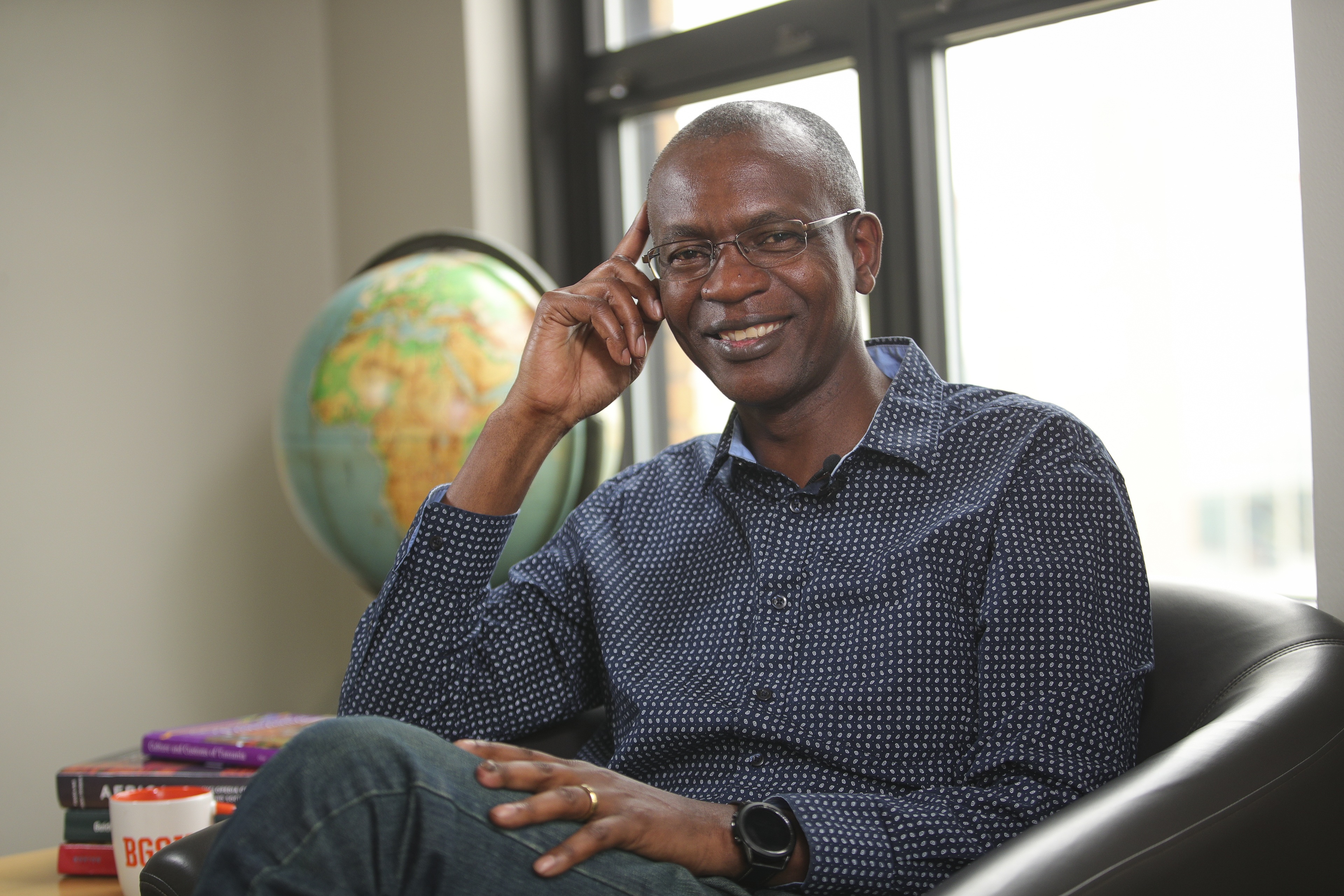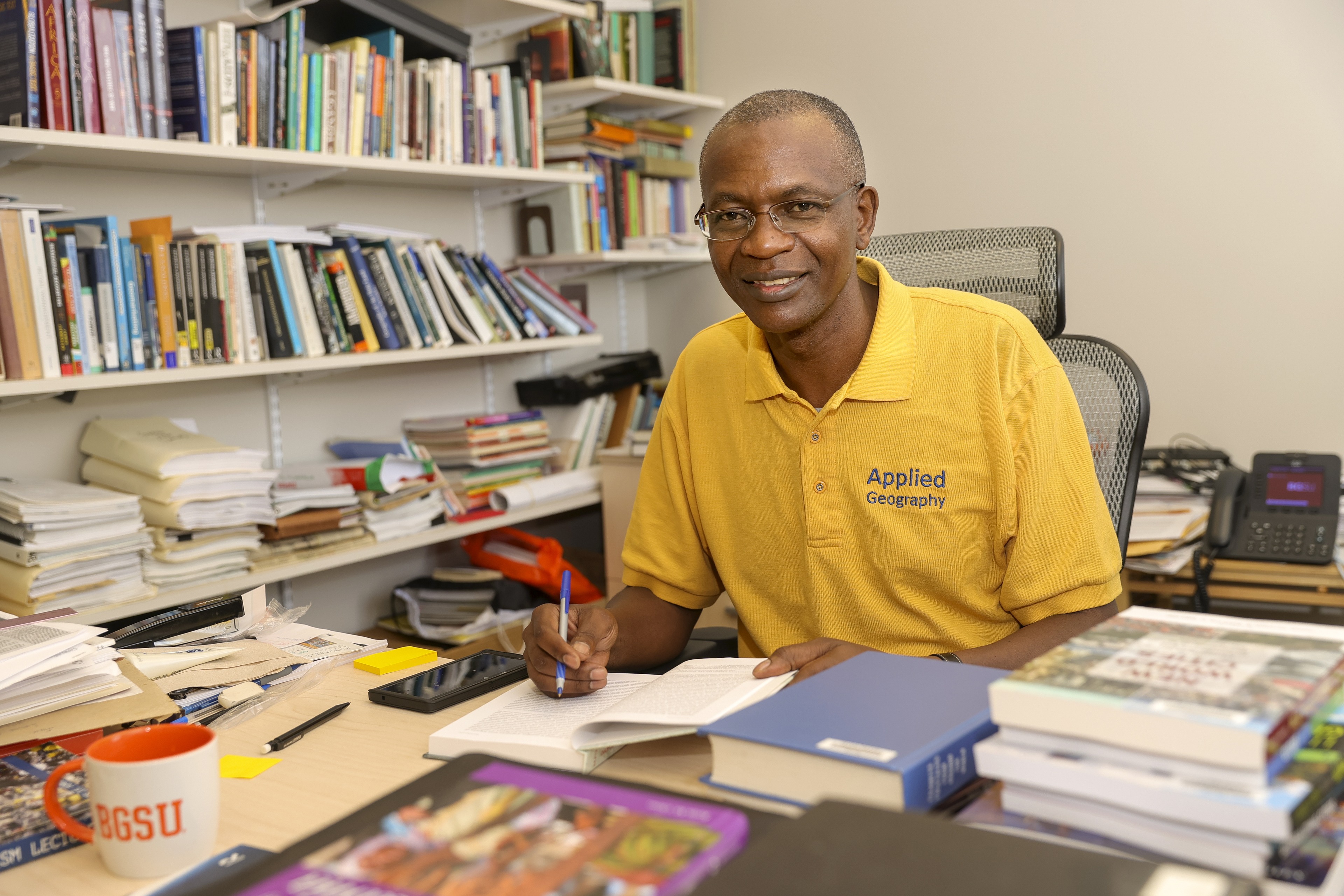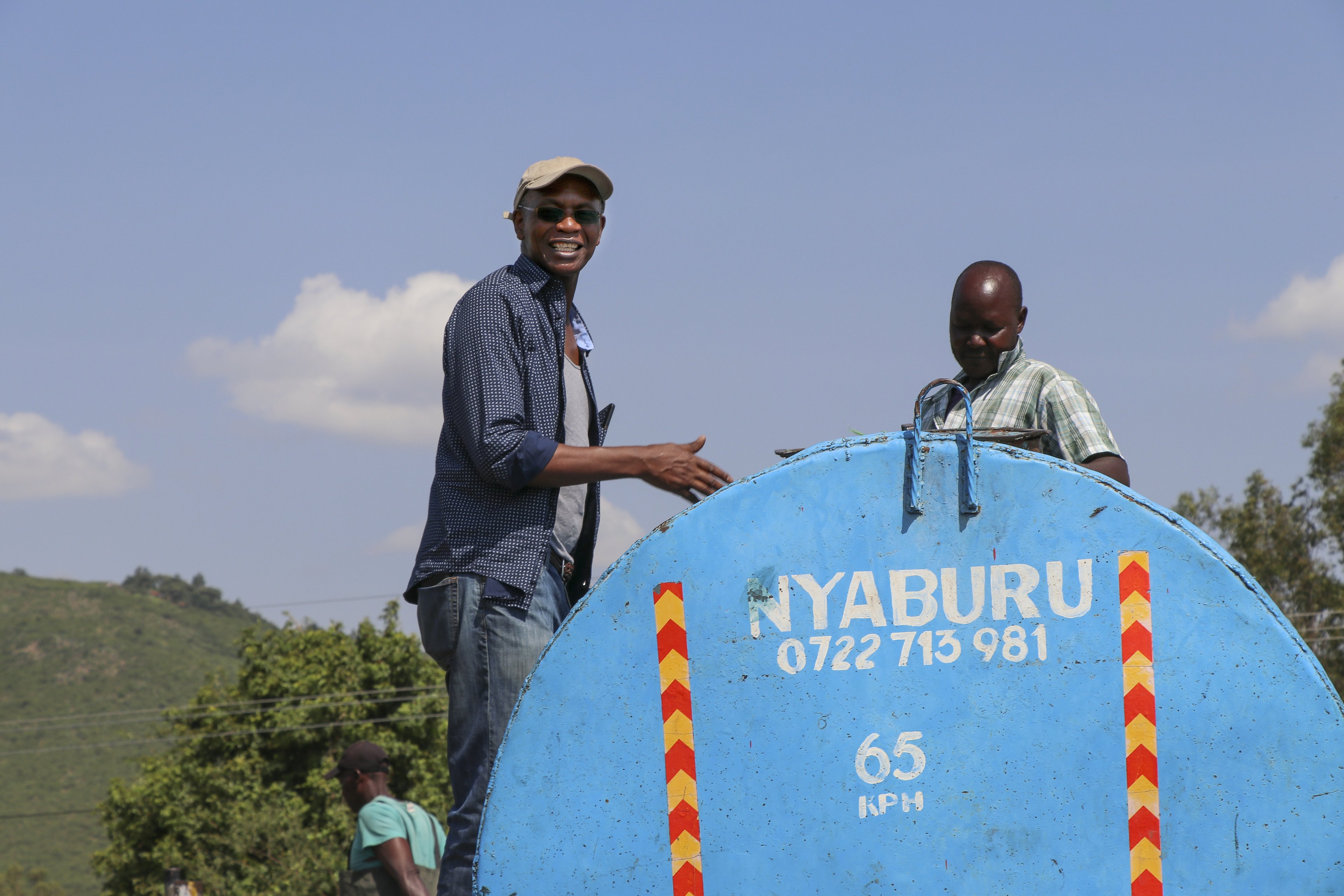
The cost of water: BGSU professor studying socioeconomic side of toxic algal blooms on research trip to Kenya
BGSU-led research trip examined watershed of Lake Victoria, which experiences toxic algal blooms like Lake Erie
By Nick Piotrowicz
A complex problem cannot be fixed with a simple solution — so as Bowling Green State University researchers continue to study the issue of harmful algal blooms (HABs), they are using multiple scientific disciplines to do so.
A BGSU-led research trip to Kenya examined water quality in Lake Victoria, which, despite large climate differences from the North American Great Lakes, experiences HABs just like the western basin of Lake Erie does.

While BGSU water-quality researchers seek to establish universal rules for algal blooms, Dr. Kefa Otiso worked in tandem with colleagues from the BGSU Department of Biological Sciences, researchers at Kisii (Kenya) University, Technical University of Kenya, Kenya Marine and Fisheries Research Institute (KMFRI) and local officials within the Lake Victoria watershed to explore the socioeconomic and public policy side of HABs.
Otiso – a BGSU professor of geography, the director of the Global Village Learning Community and graduate coordinator of the School of Earth, Environment and Society – said a water source threatened by toxic algae is a complex societal issue that requires wide-ranging research to come up with a solution.
“These problems have become quite big. They’re essentially systemic problems,” Otiso said. “Even if we found out, for example, that agriculture or sewage from cities is contributing to algal blooms, the solution is not as easy as telling people not to farm or telling cities not to discharge sewage in rivers or lakes. You end up having so many dimensions to actually fix the problem.”
During his time at BGSU, Otiso has extensively researched urban and economic issues, especially as they relate to the development of African countries. Though water may be frequently overlooked, its use touches every area of society — thus presenting a unique challenge for combating HABs.
Biological science researchers know that blooms are caused by excess nutrients in watersheds stemming from human influence.

On the other side, however, coming up with solutions from a socioeconomic perspective isn’t an easy task, Otiso said.
“You need a lot of moving parts at the same time to address the issue,” Otiso said. “You’re dealing with water-quality issues, but you’re also dealing with fisheries, which are very important. So there’s the economic dimension, there’s the food dimension and people of course need water to drink, yet waste from cities and agricultural runoff are polluting these same drinking water sources.
“It’s not as easy as saying, ‘X’ should stop polluting the lake. It takes a lot of people contributing to the problem, so then it takes a lot of people to fix the issue.”
Otiso’s work will examine the human side of algal blooms, including evaluating how water quality research can inform lawmakers, what public policy already exists and how data can be applied to future policy to help correct the issue.
“I think it’s what people call a wicked problem — it’s really, really challenging,” Otiso said. “But if these problems are not addressed when they are young, it’s going to be much harder to address them down the road. You don’t want to lose an entire Lake Victoria fishery before you do something.”
Further, he said the research fits into BGSU's overall mission of doing public good, locally, nationally and globally.
Though northwestern Ohio and Kenya have their differences, they are tied together by a common problem, and perhaps common solutions. Science, however, will be key in finding those solutions, Otiso said.
“Algal blooms are a fairly new issue in more ways than one, and you can’t do policy if you don’t even know what you’re trying to control,” Otiso said.
“At the end of the day, you don’t want people making policy without the benefit of information, because then we are making bad policy. That is really what we’re trying to help out with. In terms of solutions, it’s our hope that whatever has been done in the Toledo area to fix the algal bloom issue might very well apply to Kenya, and vice versa.”
Interview with Dr. Kefa Otiso
Related Stories
Media Contact | Michael Bratton | mbratto@bgsu.edu | 419-372-6349
Updated: 04/24/2024 10:00AM




